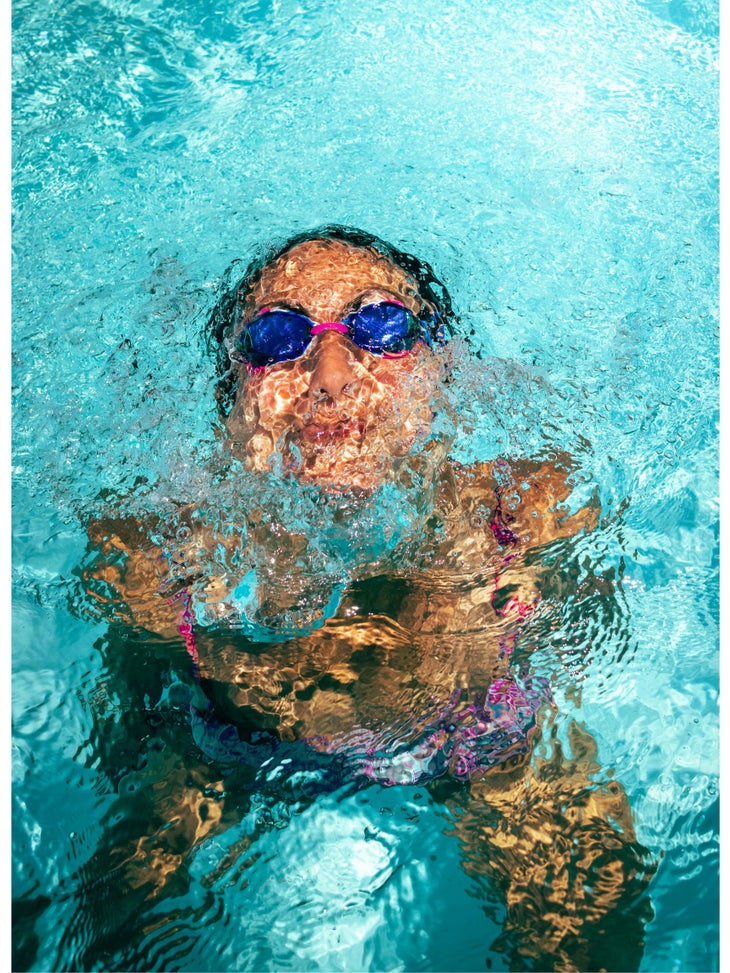“], “filter”: { “nextExceptions”: “img, blockquote, div”, “nextContainsExceptions”: “img, blockquote, a.btn, a.o-button”} }”>
Heading out the door? Read this article on the new Outside+ app available now on iOS devices for members!
>”,”name”:”in-content-cta”,”type”:”link”}}”>Download the app.
What if the real reason you dread your workout isn’t a lack of willpower but a mismatch between your body’s inherent needs and the way you’re exercising?
That could be one reason why so many people skip workouts. Alarmingly, only about 20 percent of U.S. adults exercise each day. Regular exercise is one of the most predictable ways to age slower, live longer, and be happier. Yet with so many exercise trends and options, it can be challenging to find the right ones for you. And perhaps that’s the problem.
Ayurveda provides some much-needed insight into that. The ancient science focuses on what helps bring you into balance and offers valuable insights into the types of movement that are most beneficial for you. Understanding your constitution, or dosha, enables you to opt for workouts that complement not only your physiology but your emotional state. Whether you’re a vata, pitta, or kapha, aligning your exercise accordingly can bring an array of unexpected benefits, including a reduction in negative emotions such as anxiety and anger, improved sleep quality, a more efficient metabolism, healthier skin, and the experience of more prana (life energy).
Ultimately, opting for mindful movement that aligns with your Ayurvedic dosha helps you achieve balance with less effort, whether you’re a vata seeking grounding, a pitta desiring cooling, or a kapha needing invigoration.
Best Ways to Exercise for You, According to Ayurveda
Keep in mind, rest is also essential for your health, especially for women. “Some women may need less exercise during the luteal and menstrual phases as hormonal fluctuations can lead to fatigue and less energy,” remarks Ellen Vora, psychiatrist, yoga teacher, and author of The Anatomy of Anxiety: Understanding and Overcoming the Body’s Fear Response. Listening to your body and adjusting your activity levels accordingly echoes this ancient wisdom, as Ayurveda prioritizes a balance of rest and movement for overall health.
Best Exercises for Vata Dosha
Personality: A fusion of ether and air, vata dosha is like a breezy, cool wind. Those with vata as their dominant dosha embody quick, hummingbird-like movements, are agile, and have a tendency toward bursts of energy. Vatas are also prone to restlessness or fatigue.
Exercise Types: Vatas’ creative and mobile nature can lead to anxiety when imbalanced, so exercises that are grounding and moderately intense without overheating the body can be helpful, as vatas tend to tire quickly. Any type of movement that includes a consistent, repetitive rhythm is ideal, such as walking, swimming at a non-competitive pace, or stability-focused practices such as Pilates. The naturally slender build of vata can also greatly benefit from strength training, which helps them build muscle and feel stronger. Exercises such as yoga, tai chi and moderate-paced dancing are also helpful.
Yoga: The calming and grounding nature of slow yoga practices, such as hatha and yin, are particularly beneficial for vatas. These styles can help focus vatas’ attention on stability and strength. When it comes to managing the mental restlessness and potential anxiety often experienced by vatas, yoga as a mindful movement practice offers specific benefits.
“One of the significant lessons yoga offers regarding anxiety is that ‘we do not have to be controlled by our thoughts,’” explains teacher Jonah Kest. “This is because, through practice, ‘we can create a space between the stimulus and response, and in that space is freedom from anxiety,’ allowing us to observe rather than be consumed by our anxious feelings.”
Given their need for structure to balance their airiness, vatas tend to find that establishing a regular exercise routine is beneficial. Although because they love change, they can find sticking to the same exercise tricky and prefer switching up their workouts more frequently than steadier pittas and kaphas. However, their focus should remain on activities that are grounding and not overstimulating.
Best Yoga Poses for Vata: This dosha can easily experience constipation from excess air in the area of the body it tends to reside, the colon. Grounding poses such as Child’s Pose (Balasana), Frog Pose (Mandukasana), and Cobra Pose (Bhujangasana) can help stimulate the area and bring relief. Almost any forward fold, including Standing Forward Bend (Uttanasana), can also calm vata’s nervous system.

Best Exercises for Pitta Dosha
Personality: A blend of fire and water, pitta dosha mirrors a hot, humid summer. Pittas tend to be sharp, calculating, and intentional as well as athletic, routine-oriented, and focused. When out of balance, they appear intense and find themselves prone to impatience.
Exercise Types: Moderate-intensity and non-competitive cooling physical activities are best, such as swimming, early morning or evening hiking, and non-competitive cycling and water sports. With their high energy and tendency to overheat, pittas thrive in winter activities and sports, such as skiing and snowboarding. It’s ideal for them to avoid exercising in hot weather or rooms.
Yoga: Within yoga, hatha yoga, practiced at a moderate pace with breath awareness while lingering in a pose, can help mitigate pitta’s fiery nature. Restorative yoga and yin yoga can reduce stress by stimulating the parasympathetic nervous system, which is particularly beneficial for this dosha. Slow vinyasa flows that prioritize steady breathing and mindful movement over intense exertion can also be suitable.
The practice of yoga is a powerful tool for pittas to manage their intense nature. As Kest explains, “Yoga offers a transformative way to handle anger, acknowledging it as energy that, when suppressed, festers, and when impulsively reacted to, becomes destructive.” He further emphasizes that “Yoga fosters awareness and grace, enabling us to observe emotions, like anger, without being defined or consumed by them.”
Best Yoga Poses for Pitta: Excess heat can cause inflammation in pitta’s home, the small intestine. Yoga asanas (poses) such as Head-to-Knee Pose (Janu Sirsasana), Corpse Pose (Savasana), and Legs Up the Wall Pose (Viparita Karani) soothe not only this area but their overall emotional state.

Best Exercises for Kapha Dosha
Personality: Embodying the elements of earth and water, kapha dosha is characterized by slowness, calmness, and steadiness. Those who are predominantly kapha tend to be loyal, reliable, and laid-back.
Exercise Types: This dosha is known for endurance as well as deliberate and meaningful movement. However, the grounded nature of kapha can lead to stagnation when not balanced with movement. Vigorous and dynamic exercises that build heat are highly beneficial for kaphas and help counteract their tendency toward coolness. These can help with the relative lack of energy and heaviness associated with the earth element. Activities such as brisk walking, running, biking, and vinyasa yoga as well as high-intensity interval training (HIIT) are excellent options.
Yoga: Dynamic sequences and styles such as Ashtanga and set-sequence hot yoga are particularly effective for kaphas. These styles balance the inherent slowness and sturdiness of kapha through vigorous movement that increases internal heat.
Hot yoga can be especially beneficial for kaphas, according to Devon Crahan, owner and lead teacher of Intentional Yoga. “Elevated kapha levels present as sluggishness and lethargy, so the heated and upbeat energy of hot asana practices can be invigorating and exciting while encouraging them to maintain mental and physical clarity, muscular strength and tone, and spiritual connection,” says Crahan.
Best Yoga Poses for Kapha: Since kapha’s primary location in the body is the chest, yoga poses that open the rib cage area are believed to help alleviate the tendency toward physical congestion. Backbends and chest openers such as Bridge Pose (Setu Bandha Sarvangasana), Camel Pose (Ustrasana), and Bow Pose (Dhanurasana) are believed to support kaphas.
Ultimately, understanding your unique composition—and which types of exercise support that—leads you toward more effective ways to balance your physical and emotional well-being.













